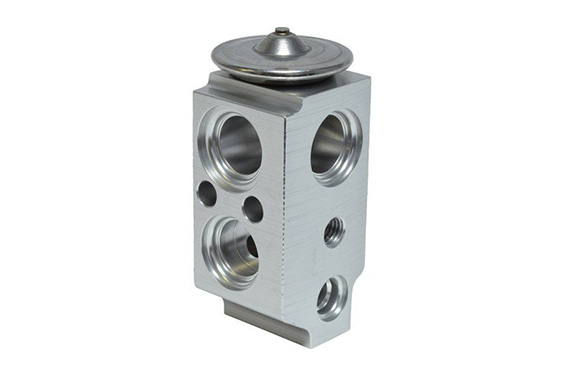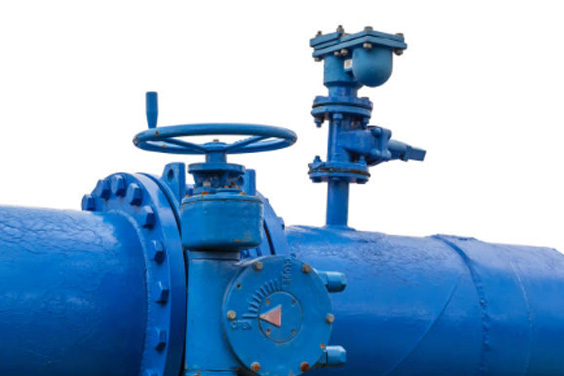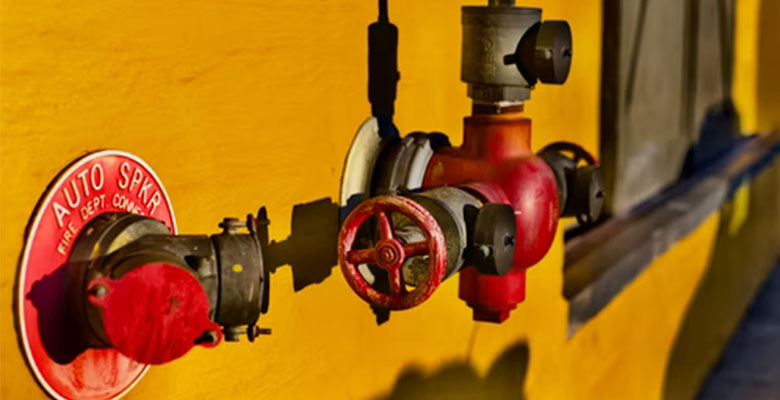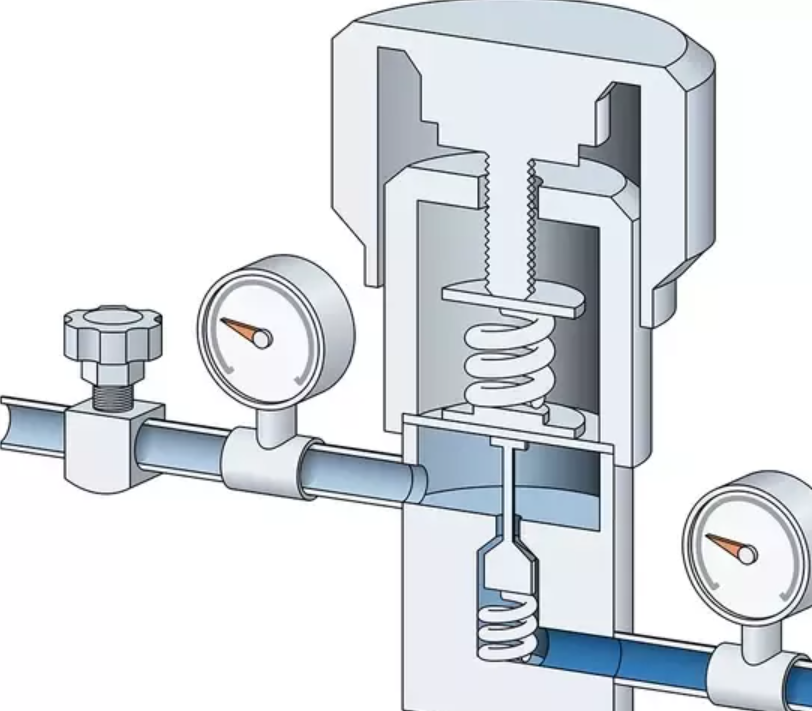It is important to get throttling valves for handling or restraining the flow of various mediums. These valves can readily control the medium’s temperature and pressure because they have throttling capabilities. The capacity of throttling valves to control the flow rate of gases, steam, and water under a certain limit distinguishes them from other types of valves.
To guarantee that the flow of water or gas is within adequate bounds, the pressure and temperature of the piping system are changed to attain the throttling movement. A throttling valve may be opened manually or automatically. One can find a wide range of throttling valves at a reliable valve manufacturer. To know more about the valves for throttling applications, check out the below sections.
What Are Throttling Valves?
The flow of liquid via a rotodynamic tube can be started, halted, and controlled using a particular type of valve called a throttling valve. The system curve is altered when a throttling valve is utilized to control a pump’s flow. When the flow is reduced, the operating point on the pump curve shifts to the left.
One method of regulating flow rates is by using throttling valves, which can either direct flow or flow in a bypass channel. An alternate approach to managing system flow is a variable speed procedure. The pump constantly operates while using the throttling valve control technique. The valve in the pump release line is unlocked or shut down to change the flow to the desired value.
Throttling valves are valves that let you change the flow path’s size via the valve in order to change the flow amount. Usually, a single side of the throttle valve will have more pressure than the other, with the former being at a lower pressure. It is possible to manage the flow of pressure by using a throttling valve. More pressure will pass through a valve if it is highly restricted.
Understanding Throttling Mechanism
Even at the ultimate system design flow, it is a common exercise for throttling control to partly close the valve to attain controllability. As a result, under any flow circumstances, energy is squandered when trying to overpower the valve’s resistance. As the flow rate is reduced in radial flow, the pump power drops, but if speed control were employed instead, the wasted energy would be recuperated from the flow reproduced by the head plunge across the valve.
On the flip side, throttling control can cause unacceptably high increases in power consumption with varied flow pumps, where the pipe power curve often climbs with reduced flow, overfilling the driver and wasting energy.
The maintenance expense of these valves must be taken into account when calculating the life cycle price apart from the energy expenses, especially in large applications where exorbitant throttling is continuing and causes cavitation across the valves. The outcome will be that the life cycle expenses of this primarily utilized control technique could be relatively expensive.
The media flow rate alters when a throttling valve is used in the pipeline. There is a limitation in the flow of liquid when the valve is partly unlocked or shut down. As a result, the media in that opened valve is subsequently compacted.
The media’s molecules start caressing against one another, and this leads to friction. Further, as the media flow goes through the valve, this friction hinders it. The temperature of the gas rises with the throttling valve in place. This results from molecules caressing against one another as they attempt to exit the valve through a small aperture.
What Are Common Throttling Valve Applications
Throttling valves are made for a variety of demanding applications in harsh environments that call for repeatable flow control and dependable shutdown. These valves are utilized in numerous industrial procedures where the liquid should be reduced in pressure. Here are the common industrial applications where throttling valves are frequently applied.
- Refrigeration
- Air Conditioning Systems
- Fuel Oil Systems
- Hydraulics
- Chemical Applications
- Pharmaceutical Applications
- Food Processing Applications
- Steam Applications
- High-temperature Applications
What Are Valves Used For Throttling
Throttling valves can simply regulate the flow as well as unlock and shut down the flow. These valves, often referred to as regulator valves, feature a disc that aids in controlling the flow through the valve. These valves were created specifically for throttling systems. Check out this section to understand the primary types of valves utilized for throttling.
- Ball Valves
A metal ball with a gap through it, positioned between two placeholders, is a ball valve. It is advised to utilize a ball valve for throttling gases in low-flow situations to get the most out of it. A ball valve’s shape enables it to shut down and carry liquids that are often more difficult to hold.
Due to its non-sticking construction, it offers a little pressure decrease even when the valve is completely unlocked. A basic 90-degree turn with a wrench is all that is needed to open and shut down the valve. It is important to remember that there are two sorts of ball valves: full-bore and half-bore. A half-bore valve retains a flow area that is limited than the pipe’s inner diameter, whereas a full-bore valve retains an identical internal flow throughout the entire region.
- Butterfly Valves
Butterfly valves are able to restrict flow and can be completely open or shut down. Even though they come in both large and tiny sizes, a butterfly valve works well in compact spaces. Butterfly valves are still functionally waterproof even after extensive use. It is possible for a controller to turn a hand wheel, a wrench, or a gearing system to open or shut down a butterfly valve.
When completely opened, they retain a disc that turns at an angle to the flow direction and seals against seats in the valve body. Outstanding throttling qualities can be found in butterfly valves. They can react to both pressures and flows, allowing for linear flow responses. Butterfly valves offer great rangeability, are portable, and are simple to use. They can be throttled and retain reasonable rangeability.
- Globe Valves
The globe valve is mainly utilized as a throttling valve, and it comes under the linear motion valve group. In connection to the still ring seat, the globe disc can shift up or down. The volume of media that can travel through is managed by its disc or plug. The globe valve makes an excellent throttling valve due to the distance between the seat and the ring. Due to its design, the seat, disc, or plug sustains minor damage.
A globe valve controls flow and pressure and has the ability to stop flow fully when necessary. The valve’s seat is parallel to the flow, which ensures little erosion of the seat and disc, is its most noteworthy advantage. A globe valve may be the throttling valve one requires to throttle commodities.
- Gate Valves
Although similar in design to a globe valve, the application of a gate valve is limited. The group of linear motion valves includes the gate valve, which is also a block valve. The moment the valve unlocks, erosion starts because it cannot supervise the flow. The flow of liquids can damage the seating surface by vibrating the disc if a gate valve is not completely shut down or opened. This will deter a tight seal when it is required.
When a gate valve is opened or shut down, its discs travel up and down. They are mainly employed as turn-on and turn-off services. Throttling valve limits apply to gate valves. Gate valves are utilized to control gas, oil, air, oil, steam, or water in an environment with continuous low pressure and high temperature.
- Pinch Valves
Pinch valves are an incredible option when selecting a throttle control mechanism. They are straightforward to set up and use. Also, since there is no frictional resistance, they would not clog. These valves are also among the lightest valve kinds as well. Pinch valves are also among the simplest to keep in working order.
Pinch valves are simple to install and require little to no maintenance, and it is very uncommon to replace the valve’s sleeve. Pinch valves, different from other kinds of valves, are helpful for adjusting air pressure and mass flow. They can be throttled between 10% and 95% of their full flow capability.
- Needle Valves
Both manual and electronic needle valves are accessible in the present market, and the first-mentioned one is more effective at specifically regulating flow. In manually controlled needle valves, the plunger that controls the liquid flow must be modified by making numerous revolutions of the screw handle.
Additionally, needle valves work better with gas bleeder lines, automatic combustion control systems, and pipe sample points. They can throttle little quantities of liquid and do not take up plenty of room to install. In addition to that, throttling can be accomplished with these valves.
- Diaphragm Valves
The pinch valve and the diaphragm valve are very similar. Rather than an elastomer liner, its throttling mechanism is an elastomer diaphragm. A diaphragm disc in the diaphragm valve presses on the valve’s underside to shut it down. This type of design enables bigger particles to shift through the valves.
The weir-type diaphragm valve is superior to throttling than the straight-through diaphragm valve. Diaphragm valves have the potential to only sustain a mild temperature range and pressure span, despite the fact that they can offer a leak-proof seal. Besides that, multi-turn operations cannot be executed with it.
How to Select The Throttling Valve
Every kind of throttling valve has its own benefits and drawbacks. The options for the appropriate form of throttling valve are always reduced once the aim of establishing a throttling valve is understood.
- Size Of The Valve
Potential valve problems can be dodged by choosing valves of the proper size. For instance, if a valve is overly big, it will retain restricted throttling ability. It would most likely be close to its sealed position. As a result, the valve will be more susceptible to erosion and vibrations. In addition, the valve, which is relatively very huge will retain extra fittings like an alteration to the pumps.
- Construction Material
When picking any throttling valve, the valve body substance is vital. The kind of material that would travel through should be consistent with it. For instance, a non-corrosive valve mist enables media that is chemical-based to flow through it. Elevated temperature or increased pressure media must be directed into a powerful alloy with an inner coating.
- Connections
It is also crucial to think about how the valve is attached to the pipes. Instead of the pumps adjusting to the valve, it is critical to adapt to the current pipe connections. Fitting the valve to the necessities of the current pump is a more affordable option. For example, if the pipe ends retain flanges, the valve’s end connections should also retain flanges.
- Actuation
One of the primary considerations in picking the suitable throttling valve is the actuator. There are times when there is intense pressure present in pump applications. Due to that, a manual actuator might not effectively open or shut down the valve.
Conclusion
Throttling valves are perfect for a variety of systems because of the similar installed flow traits. At minor capacities, they provide fine throttling, and at elevated capacities, they offer similar traits. Additionally, throttling valves are very controllable and tolerable of oversizing.
In the present market, several kinds of throttling valves are accessible, and every type retains its own uses and purposes. Depending on the industrial applications and other necessities, it is essential to choose the most suitable valve type for throttling. For your industrial bulk requirements, make sure to contact Sio Valve to acquire various types of throttling valves for an affordable price.








